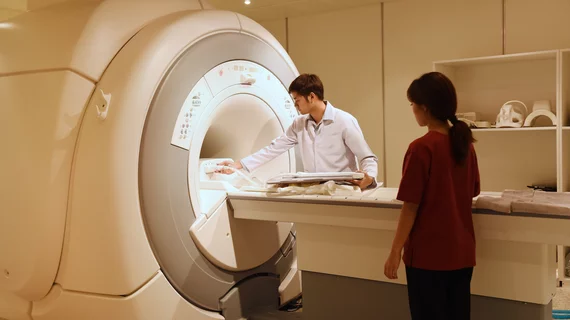4 important steps when implementing standardized imaging protocols
Standardized imaging protocols can help healthcare providers deliver high-quality care at a consistent rate, but getting everyone on the same page is often challenging. The authors of a new study published in the Journal of Digital Imaging detailed how they implemented standardized protocols throughout their entire enterprise, sharing key steps of the process.
“Our imaging enterprise includes a state university hospital and clinic system, a large county hospital and healthcare system, and a pediatric hospital and health system,” wrote Viswanathan Venkataraman, MS, University of Texas Southwestern Medical Center in Dallas, and colleagues. “Studies across the three systems are interpreted by one large academic radiology group with expertise in various subspecialties with the mission to offer a single, uniform, high-level standard of care independent of visit site and/or time of the day. Our goals were as follows: (1) Standardize imaging protocols; (2) adapt the imaging protocols to specific modalities and available equipment; and (3) disseminate this knowledge across all of the sites of care.”
Viswanathan et al. reviewed 899 existing protocols, removing duplicates to leave the enterprise with 651 protocols. For nuclear medicine, for instance, 141 protocols were present at the beginning, but 42 were immediately identified that were not longer necessary. Another 48 were removed “by combining differently named but similar protocols into new standardized protocols.”
Once approved by modality-specific groups, the final protocols were published and shared throughout the system. The team found that the protocol library was accessed more than 53,000 times from July 1, 2015, to Oct. 21, 2016.
“Interestingly, analytics indicated that complicated protocols receive highest page views,” the authors wrote. “In addition, new or recently changed protocols were also accessed frequently.”
The group also focused on finalizing a protocol change process. It was determined that minor changes would be presented during a modality-specific committee meeting and approved by a director. Those changes can be finalized in approximately 48 hours.
It was determined that new protocols, on the other hand, would be discussed “at length.” It takes anywhere from one to four weeks for a newer protocol to be finalized and shared with the team.
At the end of the project, Venkataraman and colleagues identified four “key elements for success” that helped them reach the finish line. Those four elements were:
1. Choosing an effective project champion
The director of quality for the radiology department was selected as “project champion.” This individual “provided focus and facilitated involved by division and modality services chiefs and hospital administration.”
2. Strong modality-specific operational committees
“These committees included representation from the radiologist professional group, administrative and technologist members from the healthcare systems, and medical physics; this collaborative approach facilitated institutional buy-in that aided implementation,” the authors wrote. “Furthermore, a process was implemented to maintain competencies among technical staff that takes into account the periodical optimization of protocols.”
3. Finding a project lead to manage the entire process
An individual with experience as a radiology manager, MR scientist and MR technologist was asked to serve as the group’s project lead, working to review each protocol and create the workgroups that would go on to lead the standardization process. This person was also asked to talk to any participants who did not seem to be on board with the project, working to keep engagement high and drama at a minimum.
4. Publishing the protocols electronically, making them easy to find and use
Protocols were shared in a number of ways. The data always came from one source, however, to keep things moving smoothly.
“Displaying the same source content in multiple ways ensures a single source of truth and minimizes effort when changes in protocols occur,” the authors explained.

